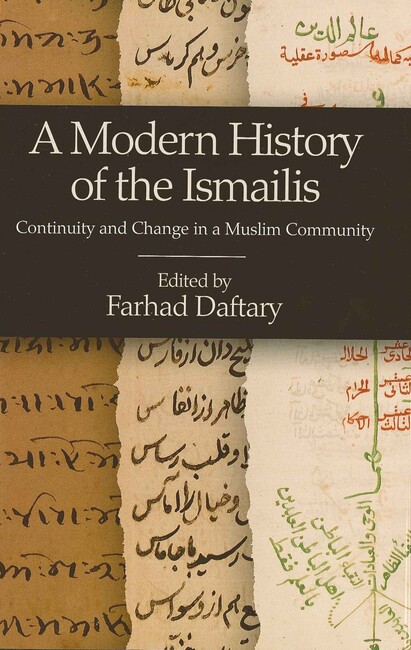This book is also available OPEN ACCESS to download or read online for free.
The IsmailisAdherents of a branch of Shi’i Islam that considers Ismail, the eldest son of the Shi’i Imam Jaʿfar al-Ṣādiq (d. 765), as his successor. have enjoyed a long, eventful and complex history dating back to the 8th century CE and originating in the Shi‘i tradition of Islam. During the medieval period, Ismailis of different regions – especially in central Asia, south Asia, Iran and Syria – developed and elaborated their own distinctive literary and intellectual traditions, which have made an outstanding contribution to the culture of Islam as a whole. At the same time, the Ismailis in the Middle Ages split into two main groups who followed different spiritual leaders. The bulk of the Ismailis came to have a line of imams now represented by the Aga Khans, while a smaller group – known in south Asia as the Bohras – developed their own type of leadership.This collection is the first scholarly attempt to survey the modern history of both Ismaili groupings since the middle of the 19th century. It covers a variety of topical issues and themes, such as the modernising policies of the Aga Khans, and also includes original studies of regional developments in Ismaili communities worldwide. The contributors focus too on how the Ismailis as a religious community have responded to the twin challenges of modernity and emigration to the West. A Modern History of the Ismailis will be welcomed as the most complete assessment yet published of the recent trajectory of this fascinating and influential Shi’i community.
Preface
Note on Transliteration and Abbreviations
Notes on the Contributors
1. Introduction
Farhad Daftary
Part I. Nizari Ismailis: Syria, Central Asia and China
2. Modern History of the Nizari Ismailis of Syria
Dick Douwes
3. The Nizari Ismailis of Central Asia in Modern Times
Hakim Elnazarov and Sultonbek Aksakolov
4. The Nizari Ismailis of China in Modern Times
Amier Saidula
Part II. Nizari Ismailis: South Asia and East Africa
5. From Satpanthi to Ismaili Muslim: The Articulation of Ismaili Khoja Identity in South Asia
Ali S. Asani
6. The Socio-Legal Formation of the Nizari Ismailis of East Africa, 1800–1950
Zulfikar Hirji
7. Communities of Tradition and the Modernizing of Education in South Asia: The Contribution of Aga KhanA title granted by the Shah of Persia to the then Ismaili Imam in 1818 and inherited by each of his successors to the Imamate. III
Shiraz Thobani
Part III. Nizari Ismailis: Contemporary Policies, Institutions and Perspectives
8. The Aga Khan Development NetworkThe Aga Khan Development Network (AKDN) is a contemporary endeavour of the Ismaili Imamat to realise the ethics and social conscience of Islam through institutional action. More and Institutions
Malise Ruthven
9. Caring for the Built Environment
Stefano Bianca
10. The Gender Policies of Aga Khan III and Aga Khan IV
Zayn R. Kassam
11. At the Interstices of Tradition, Modernity and Postmodernity: Ismaili Engagements with Contemporary Canadian Society
Karim H. Karim
Part IV. Tayyibi Mustaʿlian Ismailis
12. History of the Daʾudi BohraIndian community of Mustaʿli Ismailis, now found primarily in the Indo-Pakistan subcontinent, Yemen, Egypt and other parts of the world. Tayyibis in Modern Times: The Daʿis, the Daʿwat and the Community
Saifiyah Qutbuddin
13. The Daʾudi Bohra Tayyibis: Ideology, Literature, Learning and Social Practice
Tahera Qutbuddin
14. A Brief Note on Other Tayyibi Communities: Sulaymanis and ʿAlavis
Tahera Qutbuddin
Glossary
Select Bibliography
Index
Farhad Daftary is Co-Director and Head of the Department of Academic Research and Publications at the Institute of Ismaili Studies. He is a consulting editor of Encyclopaedia Iranica, co-director of the Encyclopaedia Islamica as well as the general editor of the Ismaili Heritage Series and the Ismaili Texts and Translations Series. An authority on Ismaili studies, Dr Daftary has written many acclaimed books in this field, including The Ismaʿilis: Their History and Doctrines (1990: 2nd ed., 2007), The Assassin Legends: Myths of the Ismaʿilis (1994), A Short History of the Ismailis (1998), Ismaili Literature: A Bibliography of Sources and Studies (2004), Ismailis in Medieval Muslim Societies (2005), and (with Z. Hijri) The Ismailis: An Illustrated History (2008). Dr Daftary’s books have been translated into Arabic, Persian, Turkish, Urdu, Gujarati and numerous European languages.

